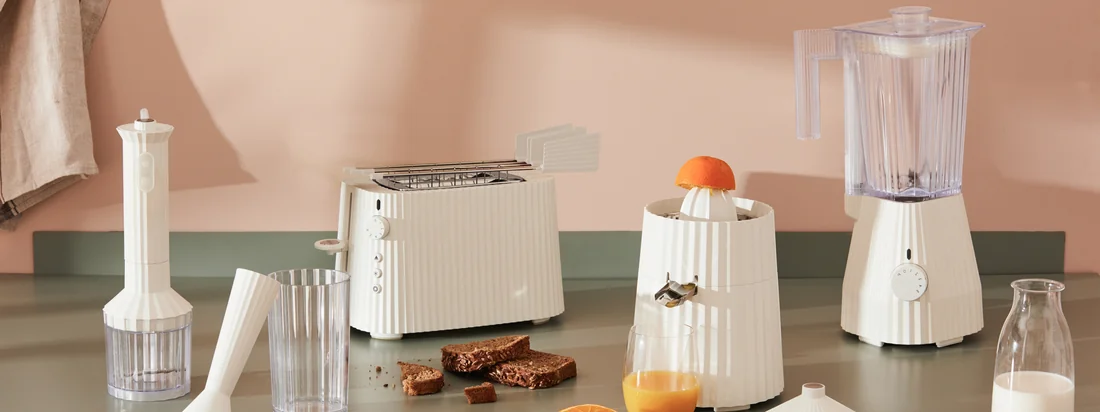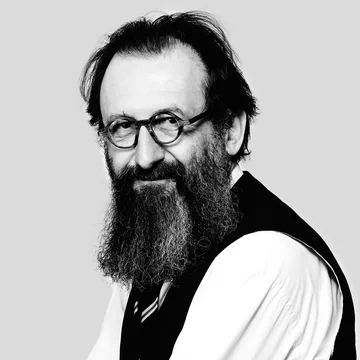Plissé kitchen appliances by Michele De Lucchi
In 2018 Michele De Lucchi created the Plissé kettle, which quickly attracted the interest of the public thanks to its plastic and sculptural form. With its pleated design, reminiscent of a haute couture dress, Plissé soon established itself as a new icon in our domestic landscape.
In search of expressive possibilities offered by a dense series of folds, De Lucchi has created a small collection of household appliances that now includes a kettle, a lemon squeezer, a blender, a toaster and a hand blender.
pleats and volume with inspiration from the fashion world
Pleats give volume to dresses and convey a feeling of lightness and cheerfulness. In a word: plissé is an iconic shape that Alessi chose for its cheerful and festive mood.
The pleated fabric originates from the fashion of the 1950s and 1960s, when skirts made of this material created breathtaking effects of floating and foamy fabrics. But even today, garments such as blouses and skirts in pleated style are still considered quite contemporary.
The manufacturer Alessi is convinced: Objects like pieces of furniture do not only work when they are in use, but they also function as room-filling presences. Objects must have a formal, aesthetic and symbolic meaning and also have a great effect when they are not in use.
Objects are also a record of the time in which they were made and represent changes in taste and contemporary significance. When you look at an object, you can perceive the spirit of its historical moment, perhaps through its colour, its line or its materials. What is certain is that objects evoke a lifestyle and are a testimony to how people lived in the time to which the objects belong.
This claim is typical for products of Alessi. They are not commodities, but represent contemporary culture. They are beautiful to look at, because their value lies not only in their function, but also in their evocative power.
Designer De Lucchi explains: "With the skilful and creative use of pleats, designers give fabrics attractive shapes and create clothes like art sculptures. The starting point for Plissé seems to have been a piece of paper that Alessi folded to create a beautiful object from the world of couture. The pleats give the form its shape, model it, structure it, because a form without pleats is simply a volume without form. Folds transform simple, two-dimensional sides into three-dimensional objects".

 Michele De Lucchi
Michele De Lucchi